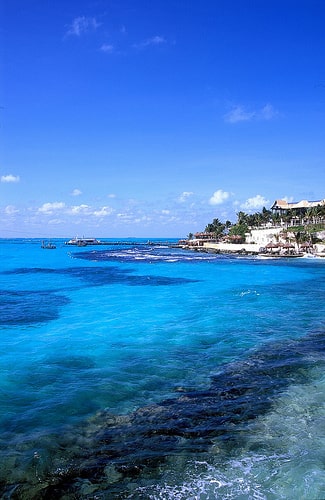According to the conqueror Bernal Diaz del Castillo, Quintana Roo was thickly populated by people who spoke the Mayan language. Years after the Conquest, most of the population died as a result of an outbreak of smallpox, leaving only small settlements on Isla Mujeres and Cozumel Island.
Cancun was only developed as a tourism destination in the 1960s when Banco de MĂ©xico carried out a research to determine the feasibility of having more foreign income through tourism development. The chosen spot was a piece of a desert coastal line near a small fisherman village called Puerto Juarez.
The Cancun Project was officially approved in 1969, but didn’t begin until January, 1970, when the first Infratur (a government agency existing prior to the creation of Fonatur) technicians arrived. The initial objectives of the project were to open up a road from Puerto Juarez to the island, design a Master Development Plan and build a provisional air strip.
The first hotels opened in 1974. Promoted as a tropical paradise, Cancun attracted tourism from Canada, the US and Europe. The city has grown rapidly over the past thirty years and it means an important percentage of Mexico’s tourism-related revenue and Quintana Roo’s gross domestic product. Cancun has become the country’s largest tourism spot and is the most booming city in the Yucatan Peninsula.
Isla Mujeres, “Island of Women”, has a long and colorful history. It used to be the sanctuary for the goddess Ixchel, The Mayan goddess of fertility, reason, medicine and the moon. When the Spaniards arrived in 1517, they found many female shaped idols representing Ixchel, so they named it “Island of Women”.
For the next tree centuries, Isla was uninhabited. The only visitors were fishermen and pirates. During the Mexico’s Independence, many Mayans escaped to Cozumel, Holbox and Isla Mujeres, a small village began in what’s now downtown, Pueblo de Dolores. The mayans found the waters around the island to be a fisherman’s paradise and slowly the village started to grow. It wasn’t until recent years that tourism became a large part of the island economy.

View from Garrafon Park | Isla Mujeres
On the south tip of the island there was an ancient Mayan temple also used as a lighthouse. The light from torches was shown through holes in the walls, which could be seen by sailors. However, in 1988, Hurricane Gilbert partially destroyed the Mayan temple.
Ferry boats depart every half hour during daylight from Isla Mujeres to Puerto Juarez in Cancun. There are numerous places to eat fresh seafood and Mayan cuisine, shops, archeological places, diving shops and many other activities. The island boasts the second largest coral reef in the world, making of it the perfect spot for snorkeling and scuba diving. It is also home to a population of sea turtles, on the southern tip of the island you can find a turtle farm specially designed for their rehabilitation and breeding.
